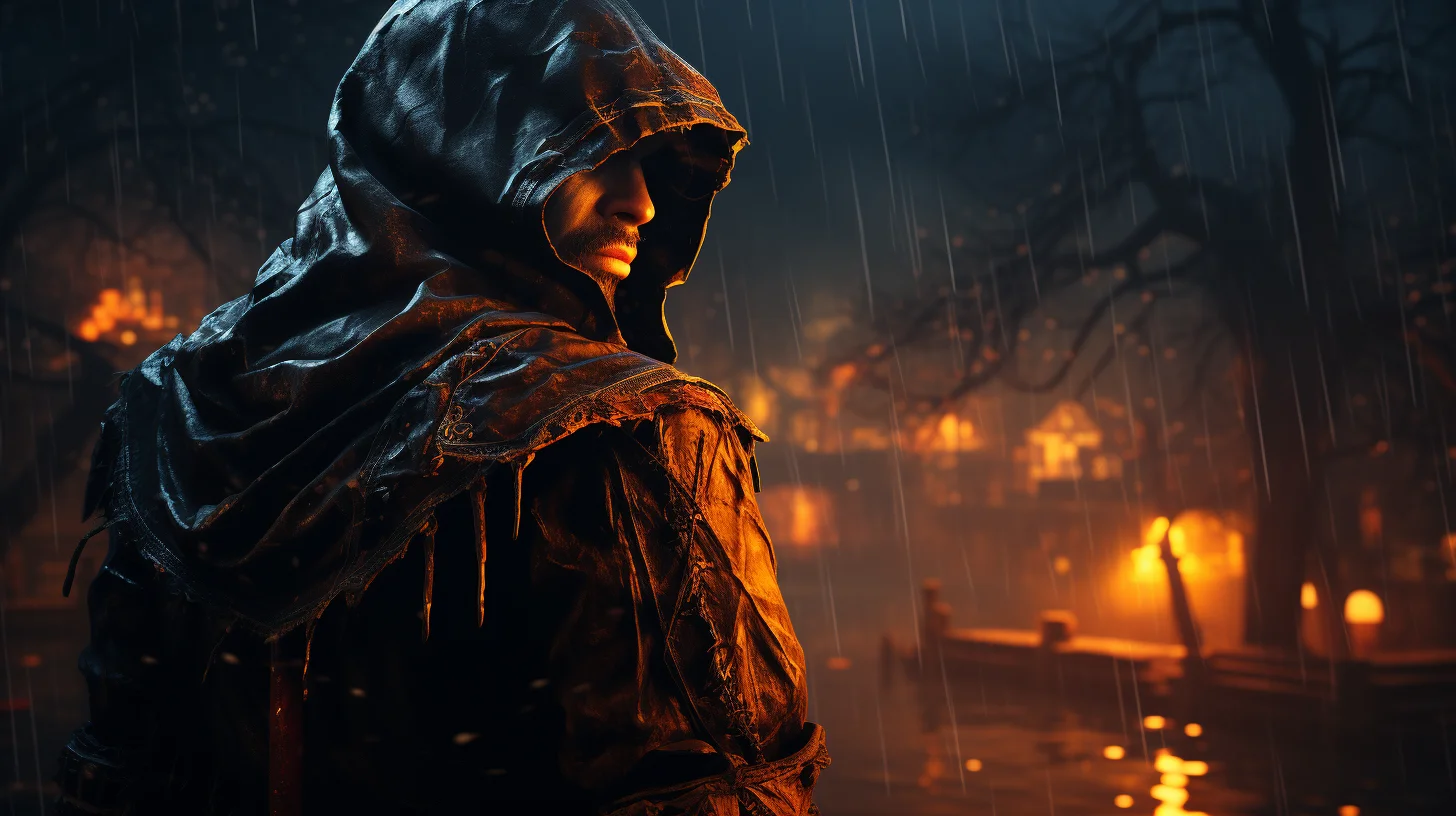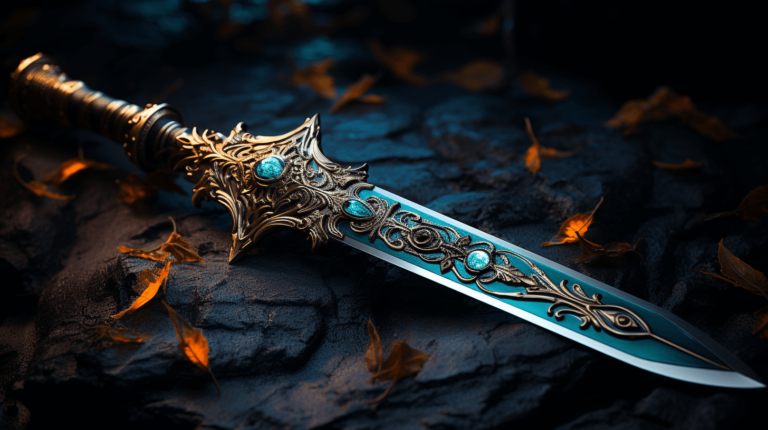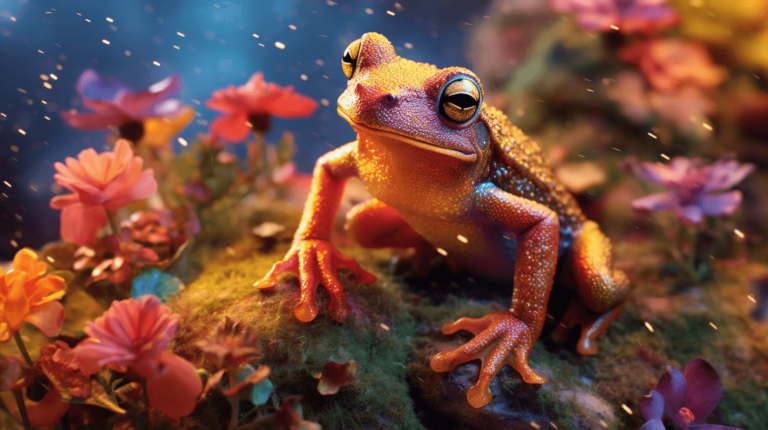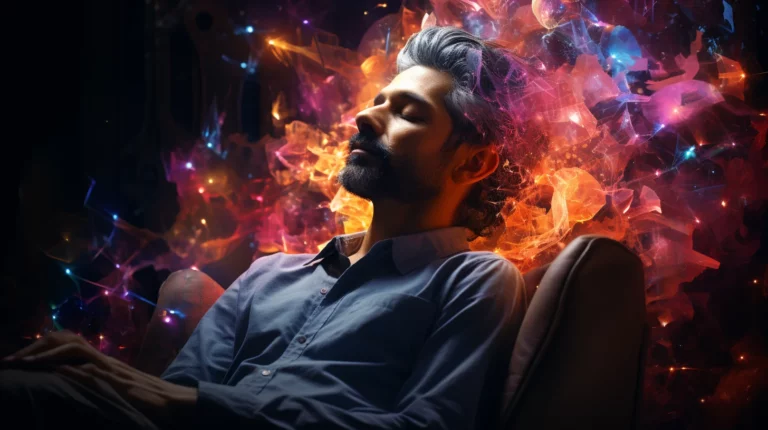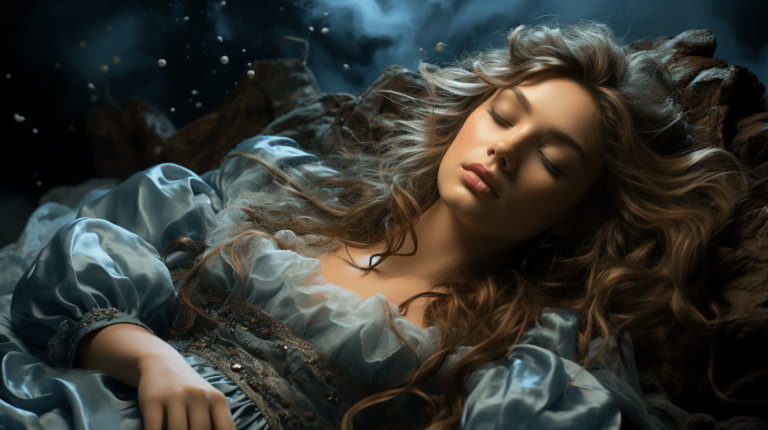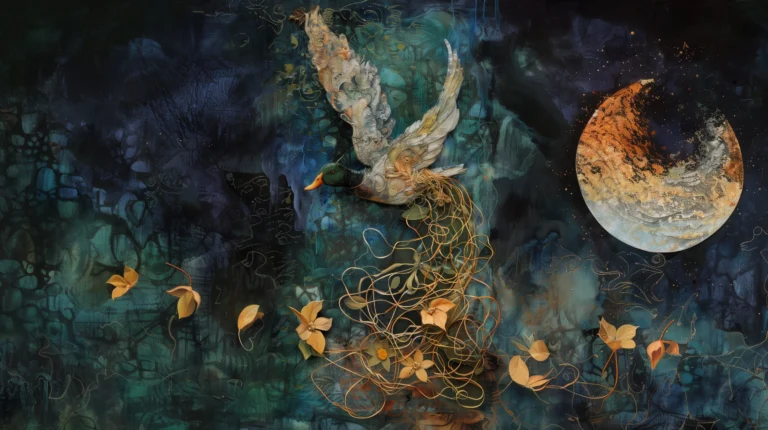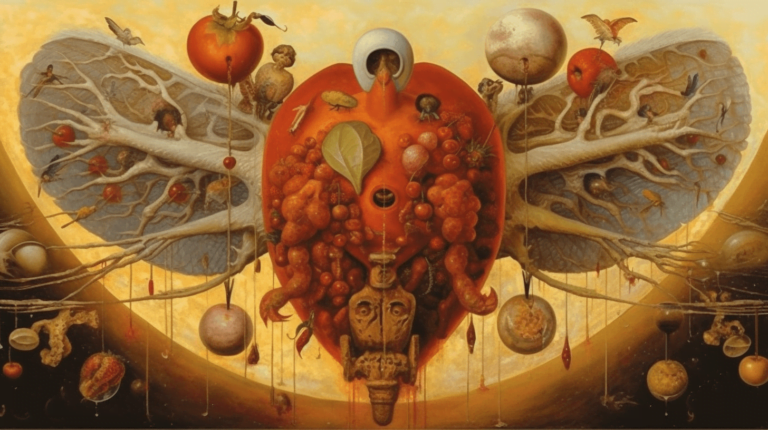Archer’s Arcana
Archer’s Arcana
From Ancient Symbolism to Modern Psychology
Table of Contents:
Introduction
- The Ancient Art of Archery
- Purpose of the Guide
Historical and Mythological Overview
- Archery in Ancient Civilizations
- Archers in Mythology: Heroes and Gods
Symbolism of the Archer
- The Hunter and the Warrior: Dual Roles
- The Focus of the Eye and Mind
- Solitude and Independence
- The Archer as a Messenger: Delivering Intent
Symbolism of the Bow
- A Tool of Potential and Power
- The Arc and the Crescent: Symbolic Shapes in Nature and Culture
- Tension and Release: The Dynamic of Change
Symbolism of the Arrow
- Direction, Purpose, and Intent
- The Flight of Thought and Ambition
- The Arrow as a Bridge: Connecting Earth and Sky
Archetypes and the Unconscious
- The Hero’s Journey: Archers in Epic Tales
- The Shadow: Misuse of the Bow and Arrow
- Animus and Anima: Gender and the Archer Archetype
Occult Knowledge and the Archer
- Astrological Significance: Sagittarius and the Centaur
- Tarot Connections: The Bow, Arrow, and Beyond
- Alchemical Symbolism: Transmutation through Aim and Release
Psychological Interpretations
- Archery as Meditation: Mindfulness and Focus
- The Bow and Arrow in Dreams: Jungian Perspectives
- The Therapeutic Value of Archery: Healing and Empowerment
Conclusion
- The Timeless Allure of the Archer
- Applying Symbolism in Personal Exploration and Growth
Introduction
The rhythmic pull of the string, the calculated focus on a distant target, the subtle dance between tension and release; archery has always been a unique confluence of patience, precision, and power. From the prehistoric hunter meticulously crafting his bow from yew or ash to the modern-day Olympian refining her technique for gold, the essence of archery remains unchanged. It’s not just about projecting an arrow towards a target; it’s about the intertwining of human will, the laws of physics, and the age-old quest for mastery.
The Ancient Art of Archery
Archery’s roots are deeply embedded in the timeline of human civilization, evolving in parallel with our species’ story. To trace its lineage is to voyage through time, from the primeval forests where our ancestors roamed to the grand courts of emperors and kings.
Picture, if you will, a world untouched by the cacophony of modernity, where survival is the only game in town. Here, early humans discovered the transformative power of the bow and arrow—a weapon, a tool, and a lifeline. Its inception was more than just an advancement in hunting; it marked a quantum leap in human innovation and strategy. By extending their reach, ancient archers could engage prey (or foes) from a safer distance, increasing their chances of success and survival. This wasn’t merely about sustenance; it was the dawn of a new tactical era.
Fast forward to the kingdoms of antiquity, and we find archery deeply intertwined with mythology, warfare, and statecraft. The Pharaohs of Egypt, the emperors of China, and the monarchs of Persia—all recognized the value of skilled archers in their armies. In many cultures, it was more than just military might; the bow and arrow were imbued with spiritual and symbolic significance. Legends of divine archers piercing the heavens or shooting down menacing beasts weren’t just tales of heroism; they reflected societal values, aspirations, and fears.
Purpose of the Guide
With such a storied past, the symbolism and significance of archery is a vast, intricate field, much like the labyrinthine patterns on a Persian carpet or the delicate threads of a spider’s web. This guide is designed as a thorough exploration into the heart of this subject, shedding light on the many facets of archery’s emblematic journey.
Why is it essential to explore this symbolism? Because archery, in all its forms, is a mirror to the human soul. It resonates with themes of aspiration, focus, and intent. It embodies the tension between potential and realization, between aim and outcome. And in its silent, momentary flight, the arrow often carries with it the weight of centuries of history, thought, and culture.
In the ensuing chapters, we’ll embark on a comprehensive journey, spanning the gamut from ancient myths and legends to the occult and psychological realms. We’ll decipher the archer’s role in mythology, the spiritual potency of the bow, and the arrow’s flight as a bridge between intention and destination. This is not just a historical or symbolic recounting; it’s an invitation to reflect, to connect, and to find parallels in our own lives.
In essence, this guide is both a tribute to archery’s enduring legacy and a tool for introspection. It’s an ode to the art that has, over millennia, been a testament to human ingenuity, spirit, and the timeless quest for purpose.
Historical and Mythological Overview
The trajectory of the arrow is as much a journey through space as it is a voyage through time. It has etched its mark not only on distant targets but also on the annals of human history and imagination. The bow and arrow, though simple tools, have served as both tangible instruments of survival and ethereal symbols of myriad cultural narratives.
Archery in Ancient Civilizations
The Emergence in Prehistoric Times
Long before the pyramids cast their shadow on Egyptian sands or the ziggurats towered over Mesopotamian plains, archery had already begun its evolution. Ancient archaeological findings have unveiled arrowheads dating back tens of thousands of years, serving as silent witnesses to its primordial role. The bow and arrow offered early humans an advantage in hunting, expanding their dominion over nature and providing consistent access to food, thereby playing a pivotal role in the migration and settlement patterns of ancient tribes.
Mesopotamia: Cradle of Civilizations and Archery
In the fertile crescent, where the Tigris and Euphrates rivers nurtured the first advanced societies, archery blossomed both as an art and a decisive military technique. The Assyrians, renowned for their military prowess, deployed battalions of archers whose skills were unmatched, cementing their dominance in the ancient Near East.
Egypt: The Pharaoh’s Bow
The Nile Valley, with its vast stretches of arable land, bore witness to the rise of one of history’s most iconic civilizations: Egypt. Pharaohs were often depicted with bows, a symbol of their divine authority and martial strength. The composite bow, crafted intricately using a combination of wood, horn, and sinew, was a monumental Egyptian innovation, enhancing power and range.
Far East: Dynasties and the Divine Bow
In ancient China, archery was not just a military endeavor but also a ceremonial rite and a measure of one’s character. Confucian texts emphasized the virtue of archery, linking the harmony and balance required in the act to the moral rectitude of the individual. The dynastic courts often hosted archery tournaments, symbolizing order and celestial alignment.
Archers in Mythology: Heroes and Gods
Apollo and Artemis: Divine Twins of Olympus
In the pantheon of Greek deities, Apollo and his twin sister, Artemis, held the bow and arrow as their emblematic instruments. Apollo, the sun god, was revered as the master archer whose arrows could bring forth disease or healing. Artemis, the moon goddess and protector of the wild, wielded her bow with unmatched skill, often depicted hunting with a fierce grace.
Arjuna: The Peerless Archer of the Mahabharata
In the Indian epic, the Mahabharata, Arjuna emerges as the unparalleled archer of his time. Under the tutelage of his divine guru, Drona, Arjuna mastered celestial weapons and archery techniques. His role in the Kurukshetra war, especially the philosophical discourse in the Bhagavad Gita (where his charioteer is the god Krishna), highlights the moral dilemmas and responsibilities of a warrior.
Rama: The Bow of Destiny
Another seminal figure in Indian mythology is Rama, the prince of Ayodhya, whose skill with the bow is legendary. The breaking of Shiva’s bow, an act only Rama could accomplish, leads him to win the hand of his beloved Sita, setting in motion a series of events that culminate in the epic Ramayana.
Nimrod and Ullr: Protectors and Hunters
In Biblical traditions, Nimrod is hailed as a mighty hunter before the Lord, and his prowess with the bow has made him a focal figure in various interpretations and legends. In Norse mythology, Ullr, the winter god, is depicted as an exceptional archer and skier, guarding the shield that represents the sky.
In every thread of these tales, the archer emerges not just as a figure of martial might but as a symbol of wisdom, focus, and moral alignment. Their challenges and quests serve as allegorical narratives, guiding societies in their understanding of virtue, duty, and the human condition.
This overview, while detailed, is but a glance at the rich tapestry of archery’s role in ancient civilizations and mythology. As with any exploration, nuances and depths await those who seek to journey further into each civilization’s chronicles and each deity’s legends.
Symbolism of the Archer
The silhouette of an archer, bow taut and arrow poised, evokes a myriad of emotions, interpretations, and symbolic insights. The figure is not just a person armed with a bow; it’s an embodiment of several age-old themes and ideologies that have captivated the human psyche for eons.
The Hunter and the Warrior: Dual Roles
At the most primal level, the archer is seen as both a hunter and a warrior, playing dual roles that are essential for the survival and prosperity of ancient communities.
The Hunter
As a hunter, the archer represents sustenance, survival, and the human ability to harness nature’s resources. This role is rooted in the earliest days of humanity when hunting was not a sport but a necessity. The hunter is the provider, the one who ventures into the wild unknown, faces its unpredictable challenges, and returns with sustenance for the community. Symbolically, the hunter archer represents resourcefulness, resilience, and the primal human instinct to sustain and nurture.
The Warrior
While the hunter ensures survival, the warrior guarantees protection and dominance. The warrior archer stands as a sentinel, guarding against external threats and asserting territorial supremacy. Historically, archers have held pivotal roles in warfare, often turning the tides of battles and sieges. As a symbol, the warrior represents courage, strategy, and the inherent human drive to protect, conquer, and establish order.
The Focus of the Eye and Mind
Archery is an art that demands an unparalleled level of concentration. The slightest distraction, the minutest misjudgment, can mean the difference between hitting the bullseye and missing the mark entirely.
The archer’s gaze, locked onto the target, embodies a confluence of vision and intention. It’s a testament to the human ability to concentrate, to channel all energies and thoughts towards a singular objective. This unwavering focus mirrors our innate capacity for dedication, determination, and the pursuit of goals, whether they be tangible targets or abstract aspirations.
Moreover, the act of drawing the bow requires a meditative alignment of body and mind, resonating with themes of mindfulness, presence, and the symbiotic relationship between intent and action.
Solitude and Independence
There’s an inherent solitude in the archer’s stance—a singular figure, distanced from distractions, immersed in the act. This solitude is symbolic of independence, self-reliance, and the personal journey of self-discovery.
In many cultural narratives, the archer often embarks on solitary quests, facing challenges alone and emerging stronger through individual trials. This independence doesn’t just speak of physical solitude but also signifies the mental and emotional fortitude to rely on one’s skills, instincts, and convictions.
The Archer as a Messenger: Delivering Intent
Beyond hunting, warfare, and sport, the archer also plays the role of a messenger. The released arrow, traveling towards its destination, becomes a vessel carrying the archer’s intent, wishes, or messages. Whether it’s the legendary love-struck arrows of Cupid or the divine bolts of Apollo, the arrow often symbolizes communication—sometimes between humans, at other times between mortals and the divine.
The act of releasing the arrow mirrors the human endeavor to convey thoughts, emotions, and desires. The trajectory of the arrow, in essence, becomes a bridge, connecting the archer’s intent with the world beyond.
The archer, as a symbol, is multifaceted and layered, reflecting various dimensions of the human experience. From survival and strategy to focus and communication, the archer’s narrative intertwines with the broader tapestry of human history, culture, and psyche.
Symbolism of the Bow
The bow, even when devoid of its wielder, stands as an emblem pulsating with symbolic resonance. More than a mere weapon or tool, the bow has woven its way into the fabric of human mythos, representing intricate concepts and spiritual ideologies.
A Tool of Potential and Power
Potential
In its undrawn state, a bow embodies latent potential. It rests, quietly holding within it the capability to launch, to propel, to act. This dormant power mirrors the inherent potential within each individual—the untapped talents, unexplored capabilities, and unfulfilled dreams. Just as the bow requires the hand of the archer to realize its purpose, humans too seek catalysts—experiences, challenges, inspirations—to unlock their latent potential.
Power
Once drawn, the bow transforms, brimming with kinetic energy, ready to transfer its power to the arrow. This transition from potential to palpable power exemplifies the journey of self-realization, where intrinsic qualities manifest into external achievements. In many cultures, possessing a bow was not just a marker of martial skill but also a symbol of authority, influence, and dominion.
The Arc and the Crescent: Symbolic Shapes in Nature and Culture
The shape of the bow, with its gentle curve, has an innate aesthetic and symbolic allure. This arc finds echoes in various elements of nature and cultural motifs.
Nature’s Embrace
From the crescent moon to the protective embrace of a mother, the arch is a recurring motif in nature. It suggests nurturance, cyclicity, and continuity. The bow’s curvature can be seen as a representation of the cyclical nature of life—birth, growth, decline, and rebirth—a continuous loop of creation and recreation.
Cultural Reverence
The arc has also been revered in architectural and artistic endeavors. Gothic cathedrals, with their iconic pointed arches, symbolize aspiration towards the divine. In Islamic art, the crescent moon is a significant symbol, representing the passage of time, divine illumination, and the rhythm of life.
Tension and Release: The Dynamic of Change
Perhaps one of the most profound symbolic aspects of the bow is the interplay of tension and release.
Tension
Drawing the bow creates tension, a balance of opposing forces. This tension is not just physical but also emblematic of life’s challenges, dilemmas, and conflicting desires. Just as the bow holds the promise of propelling the arrow, life’s tensions and struggles often hold within them the seeds of growth, evolution, and progress.
Release
The moment the archer releases the string, the stored energy propels the arrow forward. This release is cathartic, transformative, and purposeful. It symbolizes moments in life when accumulated experiences, learnings, and pressures find an outlet, leading to change, realization, or even enlightenment. Whether it’s the creative outburst of an artist or the decisive action of a leader, this release is where potential transforms into purpose.
The bow, in its simplicity, encapsulates complex philosophical, spiritual, and existential themes. It stands as a testament to humanity’s ability to find deeper meanings in tools and artifacts, transforming them from mere objects to profound symbols.
Symbolism of the Arrow
When one beholds an arrow, they might initially recognize it as a weapon, a tool. But within its slender form lies a myriad of symbols, each delving into the depths of human aspiration, intent, and connection. The arrow is not just a piece of crafted wood or metal; it’s a vessel of human spirit, pointing the way forward, soaring through challenges, and bridging realms.
Direction, Purpose, and Intent
The Pointed Path
One cannot overlook the arrow’s inherent design: it points. This simple yet profound attribute makes it emblematic of direction. Throughout human history, arrows have been used not just in warfare or hunting, but also as markers, guiding lost souls or pointing towards significant landmarks or paths. Symbolically, the arrow represents the human need for direction in life, a compass guiding our actions, decisions, and journey.
Purposeful Progress
Beyond mere direction, the arrow also symbolizes purpose. Once released from the bow, it moves with a singular intent, unwavering towards its target. This trajectory mirrors human ambition and purpose, the unyielding drive to achieve, to reach, and to conquer.
The Intent Imbibed
The arrow’s journey is as much about the archer’s intent as it is about its design. An arrow, in essence, carries with it the wishes, intentions, and energies of the one who releases it. This makes it a symbol of our intentions, both manifest and hidden, as they navigate the vast expanse of reality.
The Flight of Thought and Ambition
Thoughts Take Wing
When an arrow is released, it shoots skyward, slicing through the air, unburdened and free. This flight is reminiscent of the flight of thoughts, ideas, and dreams. Just as the arrow can travel great distances, our thoughts, too, can traverse realms, pushing the boundaries of imagination and possibility.
Ambition’s Ascent
The arrow’s ascent, especially when aimed high, is symbolic of human ambition. The desire to rise, to elevate oneself, to touch the very stars that glisten in the night sky, is encapsulated in the arrow’s journey. It tells tales of aspirations that refuse to be grounded, that challenge gravity, limitations, and norms.
The Arrow as a Bridge: Connecting Earth and Sky
The Terrestrial and the Celestial
In its flight, the arrow connects the earth from which it is launched and the sky towards which it soars. This connection has been revered in various cultures as a bridge between the terrestrial and the celestial, the mortal and the divine. In some indigenous cultures, arrows were shot towards the heavens during rituals, carrying messages, prayers, or offerings to the gods.
The Mediator
The arrow also plays the role of a mediator. It not just connects but also communicates, serving as a link between realms. Whether it’s the legendary arrows of the Greek god Hermes, who served as a messenger between gods and mortals, or the sacred arrows used in shamanistic rituals, the arrow bridges gaps, facilitating understanding, exchange, and unity.
In its essence, the arrow is a reflection of the human spirit. It points, it soars, it connects. Through its journey, it narrates tales of our ambitions, our desires to bridge divides, and our eternal quest for purpose and direction.
Archetypes and the Unconscious
Carl Jung, the eminent psychiatrist and psychoanalyst, introduced the concept of archetypes as universal, primordial symbols and images that reside in the unconscious. They form the basis of recurring motifs in myths, stories, and dreams across diverse cultures. When examining archery through the lens of these archetypes, we unveil deep-rooted psychological resonances and narratives interwoven into the human psyche.
The Hero’s Journey: Archers in Epic Tales
A Call to Adventure
The archer, in many myths and legends, often begins as an unassuming figure, perhaps unaware of their skill or destiny. Yet, as with the archetypal hero’s journey, there is a call—a challenge, a contest, or a threat to the community—that necessitates their rise.
Trials and Triumphs
Throughout these epic tales, the archer faces numerous trials, often requiring not just physical skill but also moral judgment, wisdom, and resilience. Whether it’s the legendary Robin Hood, who championed the oppressed, or Arjuna from the Indian epic Mahabharata, grappling with moral dilemmas on the battlefield, the archer-hero is tested time and again.
Return and Resolution
The culmination of the hero’s journey is the return, often with newfound wisdom, treasures, or a transformed perspective. The archer, having faced and conquered external foes and internal conflicts, returns as a beacon of hope, skill, and integrity.
The Shadow: Misuse of the Bow and Arrow
Power’s Dark Side
Every archetype has its shadow side—the unacknowledged, often darker aspects of the self. In archery, the bow and arrow’s misuse, driven by malice, greed, or vengeance, manifests this shadow. History and mythology abound with tales of archers who, swayed by darker impulses, wrought destruction.
Internal Conflicts
The shadow doesn’t merely reside in external actions but also internal conflicts. An archer grappling with self-doubt, pride, or fear represents the human struggle with inner demons. The narrative isn’t just about mastering the bow but also mastering the self.
Animus and Anima: Gender and the Archer Archetype
The Feminine Archer
Jung’s concept of the Anima represents the inner feminine side of a man. Throughout history, there have been iconic female archers—Artemis, the Greek goddess of the hunt, or Atalanta, the unparalleled huntress in Greek mythology. These figures challenge conventional gender norms and represent independence, prowess, and the harmonization of traditionally masculine skills with feminine intuition and grace.
The Masculine Nurturer
Conversely, the Animus represents the masculine side of the female psyche. Male archers, while displaying prowess and strength, often also embody nurturing, protective qualities. They stand as guardians, providers, and mentors, balancing their martial skills with compassion, wisdom, and sensitivity.
By viewing archery through the archetypal lens, it becomes more than a physical act or a cultural motif. It morphs into a psychological journey, a dance of light and shadow, and a reflection of the multifaceted human psyche in its quest for balance, purpose, and transcendence.
Occult Knowledge and the Archer
The world of the occult, a realm of esoteric knowledge and mystical traditions, has often found resonance with the symbols of the archer, the bow, and the arrow. They have been integrated into various occult practices and beliefs, serving as bridges to deeper metaphysical insights and spiritual transformations.
Astrological Significance: Sagittarius and the Centaur
The Fiery Archer
Sagittarius, the ninth sign of the zodiac, is often depicted as a centaur wielding a bow and arrow, aiming towards the heavens. As a fire sign ruled by the expansive planet Jupiter, Sagittarians are said to be seekers of truth, wisdom, and higher learning. Their arrow symbolizes the quest for knowledge, adventure, and the exploration of life’s vast horizons.
Duality of the Centaur
The centaur, a creature half-human and half-horse, signifies the duality of our existence. While the human half might aim for the ethereal, seeking higher truths and spiritual insights, the horse half keeps us grounded to our primal instincts and earthly desires. Sagittarius, thus, embodies this balance between the terrestrial and the celestial, the mundane and the profound.
Tarot Connections: The Bow, Arrow, and Beyond
The Suit of Wands
In the Tarot, the Suit of Wands is associated with inspiration, spirituality, determination, strength, intuition, creativity, and ambition. While not directly an arrow, the wand shares symbolic similarities, representing direction, purpose, and the channeling of energies. It’s a tool of intention, much like the arrow, guiding energies towards a specific goal or manifestation.
The Archer’s Journey
While there isn’t a direct ‘archer’ card in the traditional Tarot deck, the journey of the archer—aiming, releasing, and reaching a destination—can be mapped onto the Major Arcana’s journey. From the initial intention (The Magician) to overcoming challenges (The Chariot) and finally achieving enlightenment (The World), the archer’s path mirrors the Fool’s journey through the Major Arcana.
Alchemical Symbolism: Transmutation through Aim and Release
The Magnum Opus
In alchemical traditions, the magnum opus, or the ‘great work‘, refers to the process of transmuting base metals into gold, symbolizing spiritual ascension and the perfection of the soul. The act of drawing the bow, aiming, and releasing the arrow can be seen as an alchemical process. The potential energy of the bow (base metal) is harnessed and transmuted into the kinetic energy of the arrow (gold), symbolizing spiritual elevation.
Elixir of Focus
Alchemists were known to craft elixirs that could heal, enlighten, or transform. The unwavering focus of the archer, aligning the eye, mind, and heart towards a singular goal, can be seen as an internal elixir—a distilled essence of clarity, purpose, and alignment.
By threading the needle through archery and the occult, one unveils a tapestry of profound connections and insights. The archer, in the realm of the esoteric, is not merely a warrior or hunter but a seeker, a channeler, and a beacon of spiritual and metaphysical quests.
Psychological Interpretations
The realm of archery, with its intricate ballet of mind, body, and tool, lends itself beautifully to psychological introspection. Beyond the physical act lies a depth of mental engagement and emotional connection, touching on the intricacies of meditation, dream interpretation, and therapeutic interventions.
Archery as Meditation: Mindfulness and Focus
The Present Moment
One of the foundational aspects of meditation is the cultivation of presence—immersing oneself entirely in the current moment. The act of archery, from nocking the arrow to releasing it, necessitates a profound connection to the present. Every minute adjustment, every breath, every sensation becomes paramount.
The Flow State
Mihaly Csikszentmihalyi, a noted psychologist, introduced the concept of the ‘flow state’—a zone where individuals lose track of time, immersed in the activity at hand, experiencing a blend of challenge and skill. Archery, with its demand for precision, offers an avenue into this state, where the archer and the act become indistinguishably one.
Breath and Being
The rhythm of breath is central to both meditation and archery. The inhalation, the pause, the exhalation—each plays a role in grounding the archer, stabilizing the shot, and fostering connection. Much like meditative practices, where breath anchors awareness, in archery, it anchors aim and intention.
The Bow and Arrow in Dreams: Jungian Perspectives
A Symbol of Direction and Purpose
From a Jungian perspective, dreaming of a bow and arrow might signify a direction or purpose the dreamer is subconsciously aligning with. The act of aiming might relate to a goal or desire, while the release and flight of the arrow might symbolize the steps or actions taken towards that aspiration.
Internal Conflicts and Resolutions
Should the dreamer miss the target or face challenges in using the bow, it could indicate internal conflicts, doubts, or external challenges hindering their path. Conversely, hitting the target might symbolize alignment, accomplishment, or an inner state of harmony.
Integration of Masculine and Feminine Energies
The bow, being receptive, holding the potential energy, might symbolize feminine energies or the ‘anima’. The arrow, directive and active, might represent masculine energies or the ‘animus’. Together, they might indicate a harmonious integration or an ongoing dance between these internal forces.
The Therapeutic Value of Archery: Healing and Empowerment
Grounding and Centering
The tactile nature of archery, combined with its rhythmic processes, offers a grounding experience. For individuals grappling with anxiety, trauma, or emotional tumult, the act of archery can serve as an anchor, pulling them into the tangible present, away from ruminative or distressing thoughts.
Empowerment and Agency
Successfully hitting a target or improving one’s skill can boost self-efficacy and confidence. For those who might feel disempowered in certain life aspects, mastering the bow and arrow can serve as a symbolic and literal reclaiming of agency.
Release and Catharsis
The act of releasing the arrow, watching it soar and hit (or miss) the target, can be cathartic. It can symbolize the release of pent-up emotions, frustrations, or burdens, providing a physical outlet for internal struggles.
Peering through the lens of psychology, archery is not just a sport or a pastime; it’s a journey inward. It offers pathways to mindfulness, insights into our subconscious, and therapeutic avenues for healing, growth, and empowerment.
Conclusion
The Timeless Allure of the Archer
The legacy of the archer, stretching across epochs, civilizations, and cultures, stands as a testament to its deep-seated allure in the human narrative. From cave paintings to modern cinema, from ancient epics to contemporary novels, the archer has perpetually captivated our collective imagination. But why?
The archer epitomizes precision, mastery, and intent. In the archer’s stance, there’s a manifestation of purpose, a confluence of past training and immediate intent. In the archer’s release, there’s trust—trust in one’s skills, the tools, and the universe at large. This act, with its synthesis of thought, emotion, and action, mirrors the intricate dance of human existence.
Beyond the individual, the archer stands as a metaphor for humanity’s perpetual quest—our endeavors to reach farther, aim higher, and pierce through the veils of ignorance, adversity, or limitation. The trajectory of the arrow, in its graceful arc, parallels our aspirations, dreams, and journeys.
Applying Symbolism in Personal Exploration and Growth
As we’ve traversed the multifaceted landscapes of symbolism associated with the archer, the bow, and the arrow, it becomes evident that these aren’t mere historical or cultural curiosities. They are, in fact, profound tools for introspection, self-awareness, and personal growth.
- Personal Aims and Goals: Much like the archer’s target, identifying our personal and professional targets provides direction. It helps channel energies, prioritize actions, and instill purpose in daily endeavors.
- Harnessing Potential: Just as the bow holds potential energy, waiting to be unleashed, each of us harbors untapped potential. Recognizing, nurturing, and leveraging these latent talents can catalyze transformation and achievement.
- Bridging Gaps: The arrow, in its flight, bridges the archer and the target. Similarly, identifying the gaps in our skills, knowledge, or understanding and then working to bridge them fosters growth and progress.
- Reflection and Mindfulness: Emulating the archer’s focus and presence can enhance our mindfulness practices. It anchors us in the present, fostering a deeper connection to our actions, emotions, and thoughts.
- Healing and Empowerment: Recognizing the therapeutic facets of archery, whether literal or symbolic, offers avenues for healing. It empowers us to release burdens, reclaim agency, and harness our energies constructively.
In the final reckoning, the symbols of the archer, the bow, and the arrow serve as mirrors—reflecting our quests, our challenges, our triumphs, and our potentials. Engaging with these symbols, be it through literature, art, or personal practice, enriches our understanding of ourselves and the world around us.
As we draw the bowstring of reflection and release the arrow of action, we partake in the timeless dance of aspiration and realization, intent and manifestation, journey and destination.

